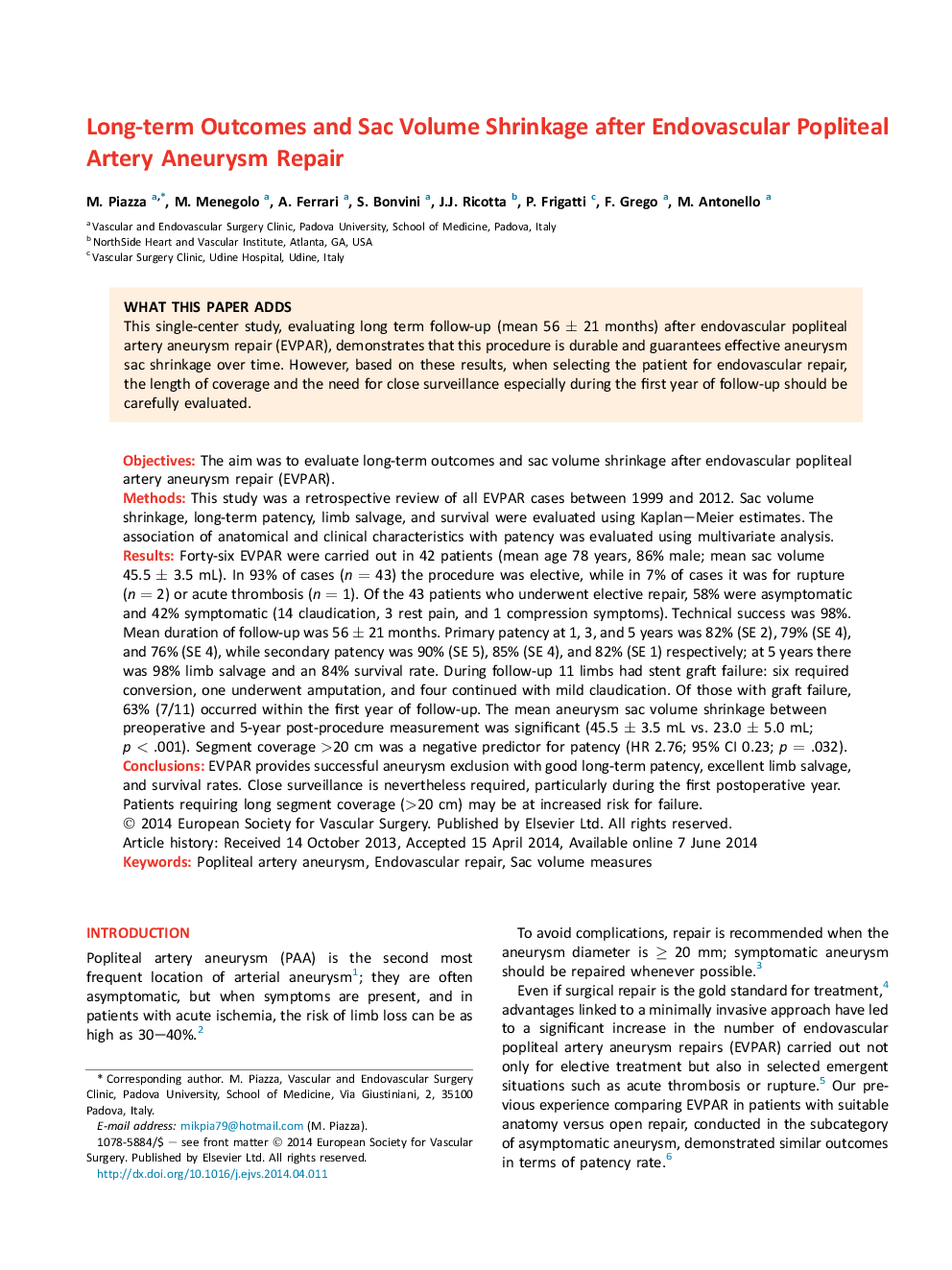| Article ID | Journal | Published Year | Pages | File Type |
|---|---|---|---|---|
| 5958195 | European Journal of Vascular and Endovascular Surgery | 2014 | 8 Pages |
ObjectivesThe aim was to evaluate long-term outcomes and sac volume shrinkage after endovascular popliteal artery aneurysm repair (EVPAR).MethodsThis study was a retrospective review of all EVPAR cases between 1999 and 2012. Sac volume shrinkage, long-term patency, limb salvage, and survival were evaluated using Kaplan-Meier estimates. The association of anatomical and clinical characteristics with patency was evaluated using multivariate analysis.ResultsForty-six EVPAR were carried out in 42 patients (mean age 78 years, 86% male; mean sac volume 45.5 ± 3.5 mL). In 93% of cases (n = 43) the procedure was elective, while in 7% of cases it was for rupture (n = 2) or acute thrombosis (n = 1). Of the 43 patients who underwent elective repair, 58% were asymptomatic and 42% symptomatic (14 claudication, 3 rest pain, and 1 compression symptoms). Technical success was 98%. Mean duration of follow-up was 56 ± 21 months. Primary patency at 1, 3, and 5 years was 82% (SE 2), 79% (SE 4), and 76% (SE 4), while secondary patency was 90% (SE 5), 85% (SE 4), and 82% (SE 1) respectively; at 5 years there was 98% limb salvage and an 84% survival rate. During follow-up 11 limbs had stent graft failure: six required conversion, one underwent amputation, and four continued with mild claudication. Of those with graft failure, 63% (7/11) occurred within the first year of follow-up. The mean aneurysm sac volume shrinkage between preoperative and 5-year post-procedure measurement was significant (45.5 ± 3.5 mL vs. 23.0 ± 5.0 mL; p < .001). Segment coverage >20 cm was a negative predictor for patency (HR 2.76; 95% CI 0.23; p = .032).ConclusionsEVPAR provides successful aneurysm exclusion with good long-term patency, excellent limb salvage, and survival rates. Close surveillance is nevertheless required, particularly during the first postoperative year. Patients requiring long segment coverage (>20 cm) may be at increased risk for failure.
